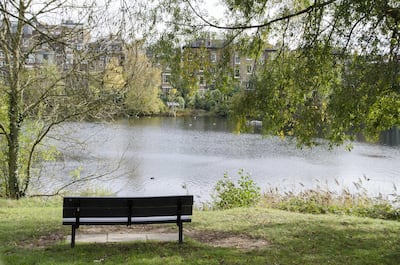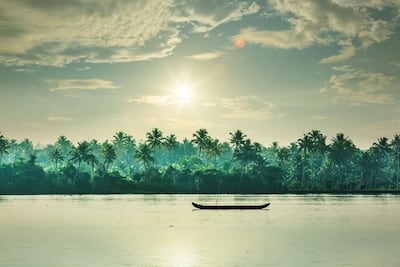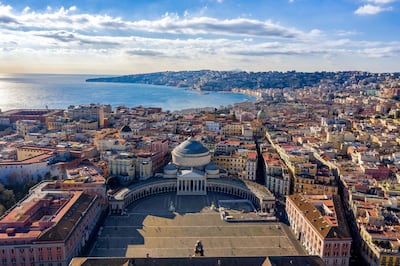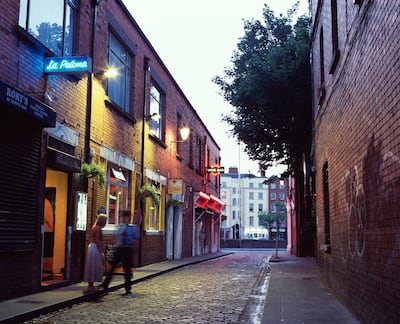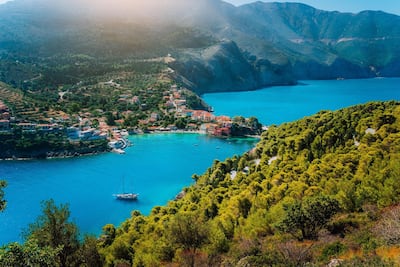"Not I, nor anyone else, can travel that road for you. You must travel it by yourself. It is not far. It is within reach," writes American poet Walt Whitman in his 1855 volume of poems, Leaves of Grass, as he discusses our innate human instinct to set out on adventures.
What Whitman may not have considered is the way a good book can transport you to the very road you want to travel down, before you even pack your bags.
Unlike a film, which presents someone else's vision of a place, a book allows the reader to create a landscape unique to them. A great writer conjures a setting with recognisable symbols and the embroidery of language. We then weave together an unknown tapestry – the world of the story – in our own imagination.
It’s that subjective experience, the sense of knowing a place without having ever been there, that makes us want to step into that setting for real.
No one knows this better than author and Lonely Planet contributor Sarah Baxter, who has compiled a new compendium of destinations to visit based on their strong links to literature.
Beautifully illustrated by Amy Grimes, the book dips into 25 literary places from around the globe, revealing a little of the culture and history of each place, as well as intersections and musings on the writers behind the novels and their lives.
"I love the idea of being able to physically step into the pages of some of the world's greatest novels – and I love the fact that, if you can't physically travel, the books will take you there anyway," says Baxter.
What could be better than travelling to the place in which a novel, poem or even biography was written or set? To step into the character or the author’s shoes and share in the sights, smells and sounds that the words in your book were trying to pin down in the first place?
The big question: devour the novel then hit the road? Or read while on the road? Baxter advises reading en route. "I love to read a book about a place while I'm in a place – I enjoy the marriage of moods," she says.
But be warned: make sure the destinations match. "I remember once reading a book set in India while I was in France and it felt oddly jarring!" Baxter adds.
In an ode to Abu Dhabi International Book Fair kicking off today, and in celebration of Sharjah being named Unesco's World Book Capital, we bring to you our pick of the myriad destinations that have inspired the world’s literary canon. This is the ultimate list of places to visit and books to read along the way.
Cartagena, Colombia: Gabriel Garcia Marquez
"I would say that I completed my education as a writer in Cartagena," Gabriel Garcia Marquez once said. Stroll through the pastel-hued old town of the city after reading one of his novels and you're bound to make the links between his life and work. The Colombian novelist is known for having pioneered the genre of magical realism for the writers of Latin America – from One Hundred Years of Solitude, a novel detailing the peculiar goings-on in the lives of seven generations of the same family in the fictional town of Macondo, to Love in the Time of Cholera, a love story inseparable from the romantic colonial old town of Cartagena.
Believed to be a metaphor for Colombia, the setting of Macondo in One Hundred Years of Solitude almost features as a character itself, expanding from a small rainforest community to a thriving colonialist hub.
Hampstead Heath, London, UK: John Keats
One of Britain's most famous poets lived just by Hampstead Heath, the capital city's enormous expanse of green, in the early 19th century. It was here that he fell in love with Fanny Brawne and, one snow-battered winter, developed the tuberculosis that eventually led to his death in Rome in 1821. The verdant park, which spans almost 800 acres from Hampstead to Highgate, also happens to be where Keats is said to have written Ode to a Nightingale, sitting quill in hand beneath a plum tree.
Well maintained and just as lush and dense as it was in Keats’s day, Hampstead Heath offers a portal to the poet’s London – shrouded in thickets, blackberry bushes and trees that whisper in the breeze, masking the traffic of the city just beyond its circumference. Visitors can also pay the poet’s house a visit. He lived on Keats’s Grove between 1817 and 1820, and his former home is now a museum dedicated to commemorating his life and work.
Tokyo, Japan: Haruki Murakami
Set in the crowded city-centre streets of Tokyo, Murakami's After Dark conjures images of neon digital screens, looming skyscrapers and youths that might have stepped right out of a manga comic book. Typical of the Japanese writer's other works, After Dark takes place somewhere between a dream and reality. Read this one for an impression of the nightlife that hums and the chaotic diaspora of characters you'll find on the streets of Tokyo.
Kerala, India: Arundhati Roy
Man Booker Prize-winner Arundhati Roy wrote her award-winning debut novel God of Small Things in 1996. More than 20 years later, she published her second novel, The Ministry of Utmost Happiness. Look to the first for a darkly nostalgic view of the hazy tropical backwaters of Kerala in southern India. Dip into the second for a sprawling novel that explores modern India, hovering over countless people and their stories to expose the bewilderingly beautiful and paradoxically ugly truths of the country.
Naples, southern Italy: Elena Ferrante
Elena Ferrante's bildungsroman series, The Neapolitan Novels, has put the south of Italy firmly on the map.
Colourful descriptions fill the pages of the four-book series that begins with My Brilliant Friend. Set in Napoli over the course of two women's lives, Ferrante's novels are an honest depiction of female friendship. Their backdrop are the crumbling tenement housing, once-grand piazzas and sun-drenched islands – unknown to most until the New York Times best-selling novels gained worldwide recognition.
The Rione Luzzatti neighbourhood of Naples now has its own mural by artist Eduardo Castaldo dedicated to the novels that have made Ferrante a household name. Meanwhile, Ustica, an aquamarine-encircled paradise off the coast of Sicily, is the island on which the character Elena holidays, finally finding an independent identity away from her “remarkable” and often overshadowing best friend, Lila. It also happens to be a great spot to devour any of Ferrante’s novels.
Dublin, Ireland: James Joyce
No trip to Dublin would be complete without a copy of James Joyce's Dubliners in your hand luggage. This series of short stories brings life to the city by giving characters a voice, from truanting schoolboys to old alcoholics and scheming landladies. Describing settings from the perspectives of his characters, Joyce paints an honest and varied portrayal of the Irish city. He references specific geographical locations in Dublin, making for an interesting historical tour of the heritage-rich city, should you venture out with the book in hand.
Kefalonia, Greece: Louis de Bernieres
Trust in Louis de Bernieres for stories you'll shed a tear to. More than just chick-lit, Captain Corelli's Mandolin is a historical retelling, a blending of fact and fiction that explores the Ionian Islands during the Italian occupation of Greece during the Second World War. Set on the real island of Kefalonia, in the Ionian Sea, the novel transports you to 1940s Greece.
Drama, love affairs and tragedy abound in this spirited book that overspills with the idiosyncratic scenes you’ll encounter on any island holiday.
Similarly, Birds Without Wings is one to read if you're travelling between Greece and Turkey. Set in the fictional town of Eskibahce during the war, in which Orthodox Christians were displaced from their homes in modern Turkey after the collapse of the Ottoman Empire, this novel highlights the many similarities between Greek and Turkish culture. A love story at its heart, along the way the novel also explores the conflict between two nations.


